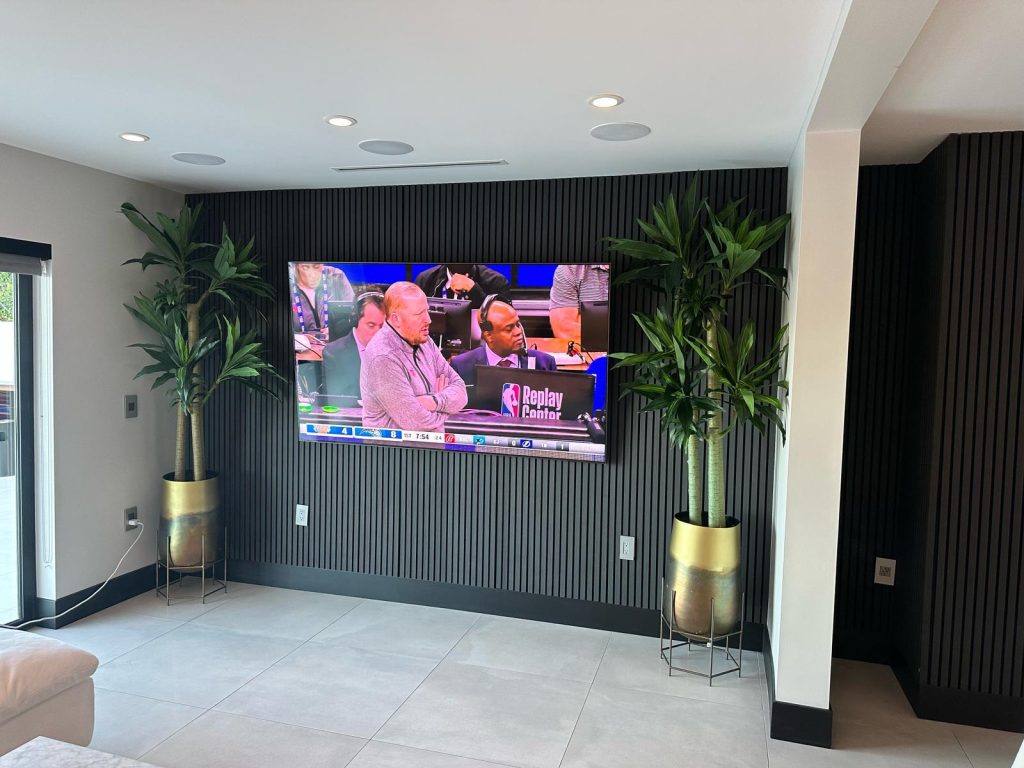What Are Slat Walls?
Slat walls are versatile, panel-based wall systems often used in both residential and commercial settings. Composed of evenly spaced slats, these panels are designed to hold hooks, shelves, and other accessories. This type of wall has gained popularity due to its practical and aesthetic qualities, making it a favored choice for homeowners and DIY enthusiasts.
The Benefits of Slat Walls
Understanding the advantages of slat walls can help homeowners make informed decisions. Here’s a detailed breakdown of their benefits:
1. Versatility
Slat walls offer unparalleled flexibility, allowing homeowners to change the wall’s function based on their needs.
- Storage Solutions: Perfect for garages, basements, or workshops, slat walls can hold tools, sports equipment, and more.
- Decorative Purposes: In living spaces, they can be used as stylish backdrops or accent walls.
2. Easy Installation
Many slat wall systems are designed for DIY installation, making it easy for homeowners to handle without needing a professional.
- Pre-made Panels: Ready-to-install panels make the process straightforward.
- Tools Required: Basic tools such as a level, screws, and a drill are typically enough to mount them.
3. Durability
Slat walls are known for their strength and ability to support heavy items.
- Material Strength: They are often made from MDF (medium-density fiberboard), PVC, or metal, ensuring they last for years.
- Long-term Value: Their robust nature means minimal maintenance is required, offering long-term cost savings.
4. Customizability
Slat walls come in various finishes and colors, allowing for personalized design.
- Different Textures: Homeowners can choose between wood, laminate, or other finishes.
- Adjustable Layouts: Accessories and shelves can be moved around without difficulty, adapting to changing needs.
The Drawbacks of Slat Walls
While there are many advantages, it’s essential to understand the potential downsides before committing to slat wall installation.
1. Cost
One significant drawback can be the initial expense.
- Initial Investment: High-quality slat walls made from durable materials can be costly.
- Accessory Prices: The cost of hooks, shelves, and other add-ons can add up quickly.
2. Aesthetic Limitations
While slat walls can be beautiful, they may not suit every design style.
- Industrial Look: They often lend a more industrial appearance, which might not blend well with more traditional or rustic interiors.
- Limited Custom Patterns: Compared to custom-designed wood panels, slat walls may have fewer pattern options.
3. Installation Challenges in Certain Spaces
Although slat walls are relatively easy to install, some spaces may present challenges.
- Uneven Surfaces: Older homes with uneven walls may require additional preparation.
- Space Requirements: To maximize utility, slat walls need sufficient wall space, which can be a constraint in smaller rooms.
How to Choose the Right Slat Wall for Your Home
Selecting the right type of slat wall involves considering materials, aesthetics, and functionality. Below are tips to guide you through this process:
1. Material Selection
- Wood vs. PVC: Wooden slat walls provide a warm, natural look, whereas PVC slat walls are more moisture-resistant and suitable for areas like garages.
- Metal Slat Walls: Ideal for heavy-duty use, these are perfect for tool sheds and industrial spaces.
2. Size and Customization
- Standard Panel Sizes: Check that the panel size fits the intended wall area.
- Custom Finishes: Consider custom colors or finishes to match existing decor.
3. Budget Planning
- Initial Costs: Include the price of panels, installation hardware, and necessary accessories.
- Maintenance Costs: While minimal, consider any long-term maintenance needs.
Slat Wall Configurations
To make understanding easier, below is a table comparing common materials used for slat walls and their key attributes:
| Material | Pros | Cons |
|---|---|---|
| Wood | Warm aesthetic, customizable | Can be expensive, needs sealing |
| PVC | Water-resistant, budget-friendly | Limited color options |
| Metal | Durable, supports heavy items | Can look industrial |
Tips for Maintaining Slat Walls
Maintaining slat walls ensures their longevity and continued functionality. Here are some easy-to-follow tips:
- Regular Cleaning: Dust and wipe down the panels to prevent dirt buildup.
- Inspect Accessories: Regularly check hooks and shelves for wear and tear.
- Avoid Overloading: Ensure the weight is evenly distributed across multiple slats to prevent damage.
Frequently Asked Questions
1. Can slat walls be painted?
Yes, slat walls can be painted if they are made of paintable materials like wood or MDF. It’s important to use a high-quality primer and paint for best results.
2. Are slat walls suitable for outdoor use?
Slat walls made from PVC or treated wood can be used outdoors, but it’s essential to choose materials resistant to weather conditions.
3. How much weight can slat walls support?
This depends on the material and installation. High-quality slat walls can hold anywhere from 40 to 100 pounds per square foot when installed correctly.
4. Can I install slat walls by myself?
Yes, most slat wall systems are designed for DIY installation. However, for larger or complex setups, professional installation might be beneficial.
5. What accessories are compatible with slat walls?
Common accessories include hooks, baskets, and shelves, which can be adjusted to meet storage needs.
Final Thoughts
Slat walls offer an excellent combination of practicality and design, making them a popular choice for various home projects. While they come with some potential drawbacks, their benefits often outweigh these, especially for those looking to maximize space and customize storage. By weighing the pros and cons, homeowners can decide if slat walls are the right solution for their home improvement needs.








